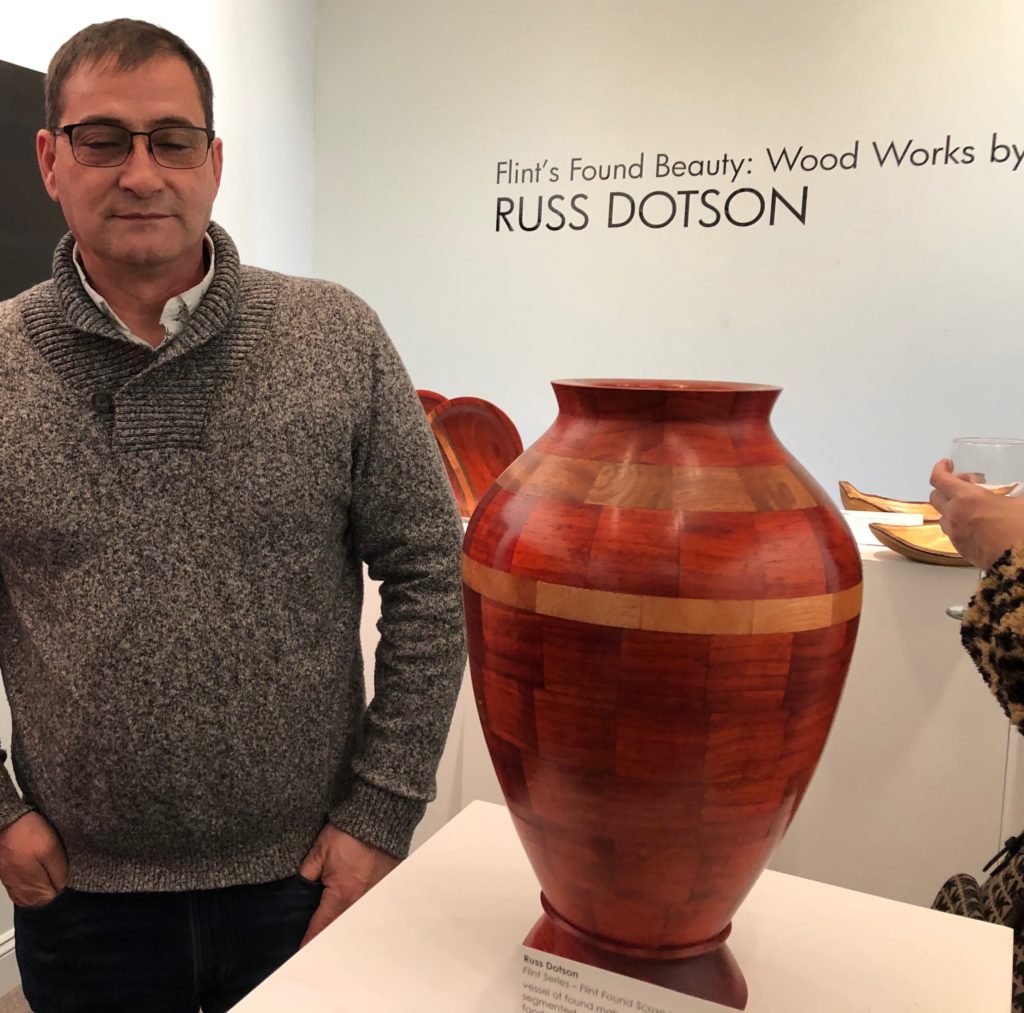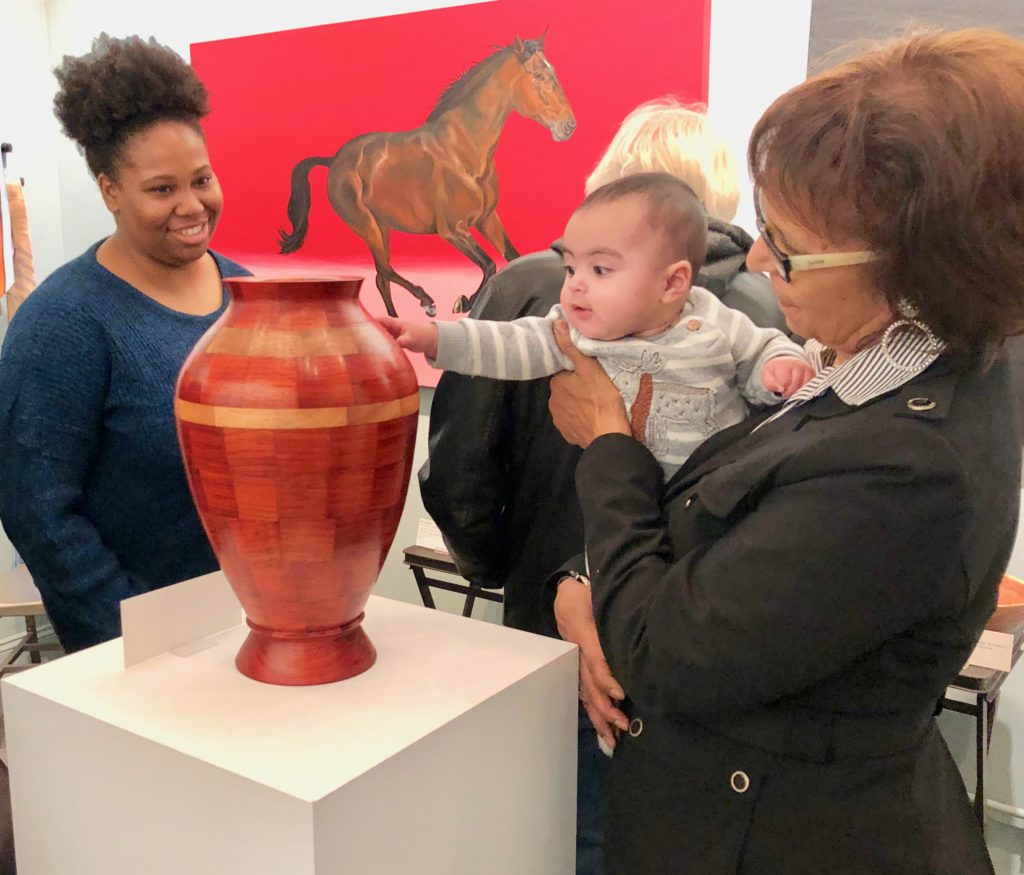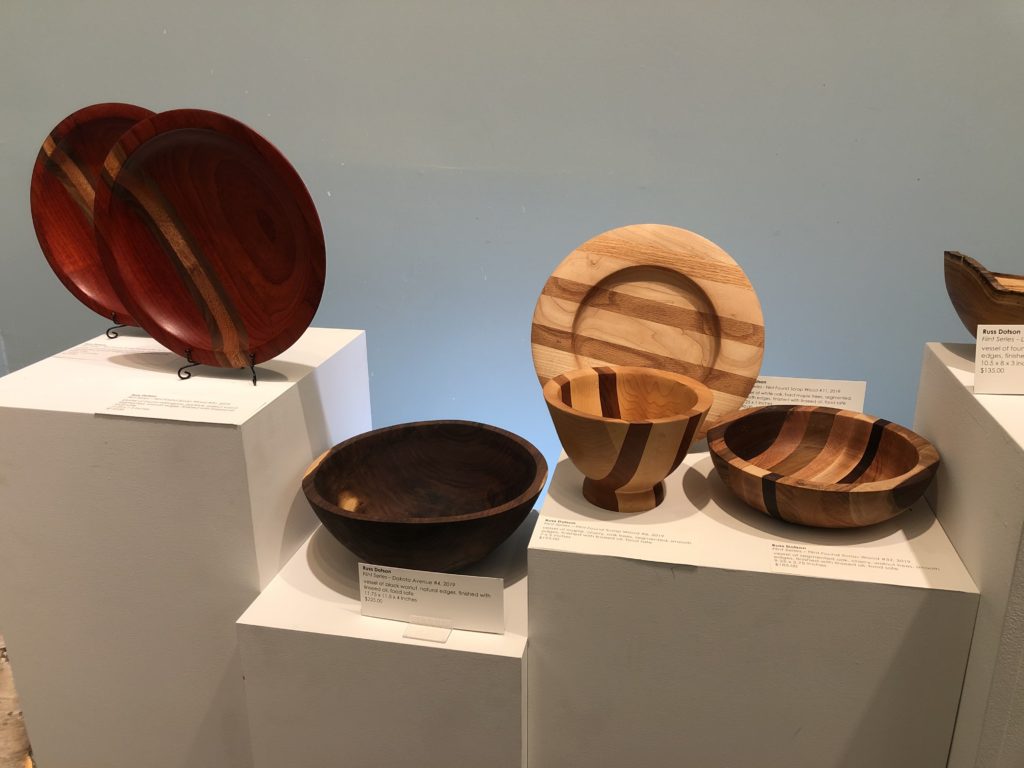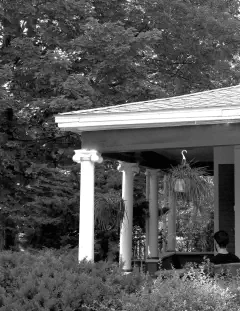By Jan Worth-Nelson
After 22 years in the Navy, including tours of duty in Iraq, Afghanistan and finally, Ethiopia, in 2015 Flint native Russ Dotson came home.
Casting about for things to do, he found himself watching a YouTube series called “Strangely Satisfying Videos” — described as “mesmerizing and hypnotizing” clips of the actions of (for example) weaving, frosting a cake, painting a perfect stop sign, peeling cellophane wrap–and turning a wooden spindle, the shavings dropping off, curled and serene.
Something about the wood turning caught his eye. “I could do that,” he said. He collected an armload of cast-off wood and bought a $100 Craig’s List lathe.
He picked up more wood, “destroyed most of it,” and the cheap lathe broke, he recalls with a chuckle. He bought a second cheap lathe, collected more wood, practiced his craft for hours, destroyed most of it, and broke that lathe, too.
“The things I was making were horrible — ugly and small,” he said. But he found it relaxing and addicting, and kept going.
“It takes a long time to practice,” he said, but in time, “I found a groove.”
He finally bought a quality lathe and gradually perfected his craft–creating smoothly sensuous and gorgeous wooden bowls, plates and vessels, a stunning collection of which are on display now through Jan. 4 at Flint Trading Company, 629 1/2 Saginaw St.

Dotson at his opening reception, with a vessel made of scrap wood from a local lumberyard: mahogany, padauk, makore wood, segmented, smooth edges and finished with linseed oil (Photo by Jan Worth-Nelson)
Dotson figures he has made “hundreds and hundreds” of wooden bowls — cherry, walnut, maple, apple, oak — and has given so many to family and friends, “They are sick of them — they don’t want any more.”
He stays with it, he says, because it’s relaxing and also, “If your wood is dry, you can finish a bowl in one sitting. If you like instant gratification, it’s fairly instant.”
Even more to the point, Dotson loves the act of rescuing and honoring the blowdowns and remains of Flint’s old trees. His Flint Trading Company show is called “Flint’s Found Beauty,” and Dotson, who has seen the world and now works in human resources at Diplomat Pharmacy, asserts his hometown offers pleasures and rewards often little known to outsiders.
Its trees, for one. He has a special eye and respect for trees cut down by the city and left at the curb or blowdowns in backyards or woods and sometimes beloved trees that have to be cut down because they’ve reached their expiration date.
Sometimes the beauty is “hidden,” Dotson says,
“Somebody might see a hoary old tree in a yard and just think, it’s dead. I see a tree that might have been in that yard for 200 years…think of all the things it’s seen.”
The process requires a steady hand, a face shield (splinters dangerously fly) and sometimes time–to get the moisture out of the wood as needed (he sometimes uses a microwave, in careful spurts) without cracking and to select just the right balance and shape.

Bowl in the middle made from the downed pear tree in Worth-Nelson’s back yard (Photo by Jan Worth-Nelson)
“I’m not creating anything,” he says, “I’m just revealing something–something that has been there all along. To take something that somebody was going to throw away at worst, or burn at best, to cut it up and burn it into a fireplace — well, I can make something nice.”
Dotson’s appreciation of Flint’s histories of abandonment and recovered dignity runs deep. His father worked at Fisher One, as did his grandfather, who participated in the Sit-down Strike. His mother grew up on Dakota at Franklin streets and went to St. Mary’s. He himself attended the recently demolished Holy Redeemer school and graduated from Grand Blanc High.

Dotson’s baby daughter Aurelia, held by grandma Karen McDonald Lopez, explores her father’s handiwork — with (at left) Ebony Johnson. Horse in the background, acrylic on canvas, is “Taurus” by Sara Lutz Snethkamp. (Photo by Jan Worth-Nelson)
And when he came back he deliberately chose the College Cultural neighborhood, known for its leafy canopy of trees, where he lives now with his wife Karina and new baby Aurelia.
So he knows a lot about the place that is yielding raw materials for his art.
“We love our trees,” he said. “I like the stories behind them. They all have a story. Once somebody’s had a tree in their yard for 50 or 60 years …they’re part of our home. We’re accustomed to them. Losing a tree is like a missing tooth.”
Taking a piece of a downed tree and making something of it –“You can keep that forever,” Dotson says. “It’s like bringing a piece of that tree back.”
In the meantime, Dotson has gotten to know his materials well and revels in their sensory idiosyncrasies.
Cherry and walnut are his favorites: walnut “looks like chocolate when you’re working it,” and when finished has a deep dark glow; and cherry as a hard wood is resilient and strong but easy to work with.
“And I love how it smells,” he says. Unlike apple wood, which does not smell like apples, cherry wood actually smells like cherries on the lathe. Walnut if it’s wet smells like horse manure and maple smells “terrible,” he says — “like dog pee.”

More Dotson creations at the Flint Trading Company exhibit (Photo by Jan Worth-Nelson)
As a matter of principal, Dotson never buys his wood, only using wood he finds or what is donated to his work. A local lumberyard sometimes lets him select from scrap wood about to be discarded. Friends and neighbors bring him burls and slices of stumps.
And when trees fall down, as in my own back yard, when a Bradford Pear cracked and split onto my garage and had to be chopped up, Dotson–my neighbor–came over and got a chunk to turn. Several weeks later, he delivered us a bowl so beautiful I can’t bring myself to put anything in it.
He likes the functionality of bowls and avoids coating them with anything more intrusive than linseed oil. “I want people to be able to feel that bowl,” he says, “and knowing that they’re touching wood.”
More information on Dotson’s exhibit is available from Flint Trading Company, 810-820-7119.
EVM Editor Jan Worth-Nelson can be reached at janworth1118@gmail.com.


You must be logged in to post a comment.